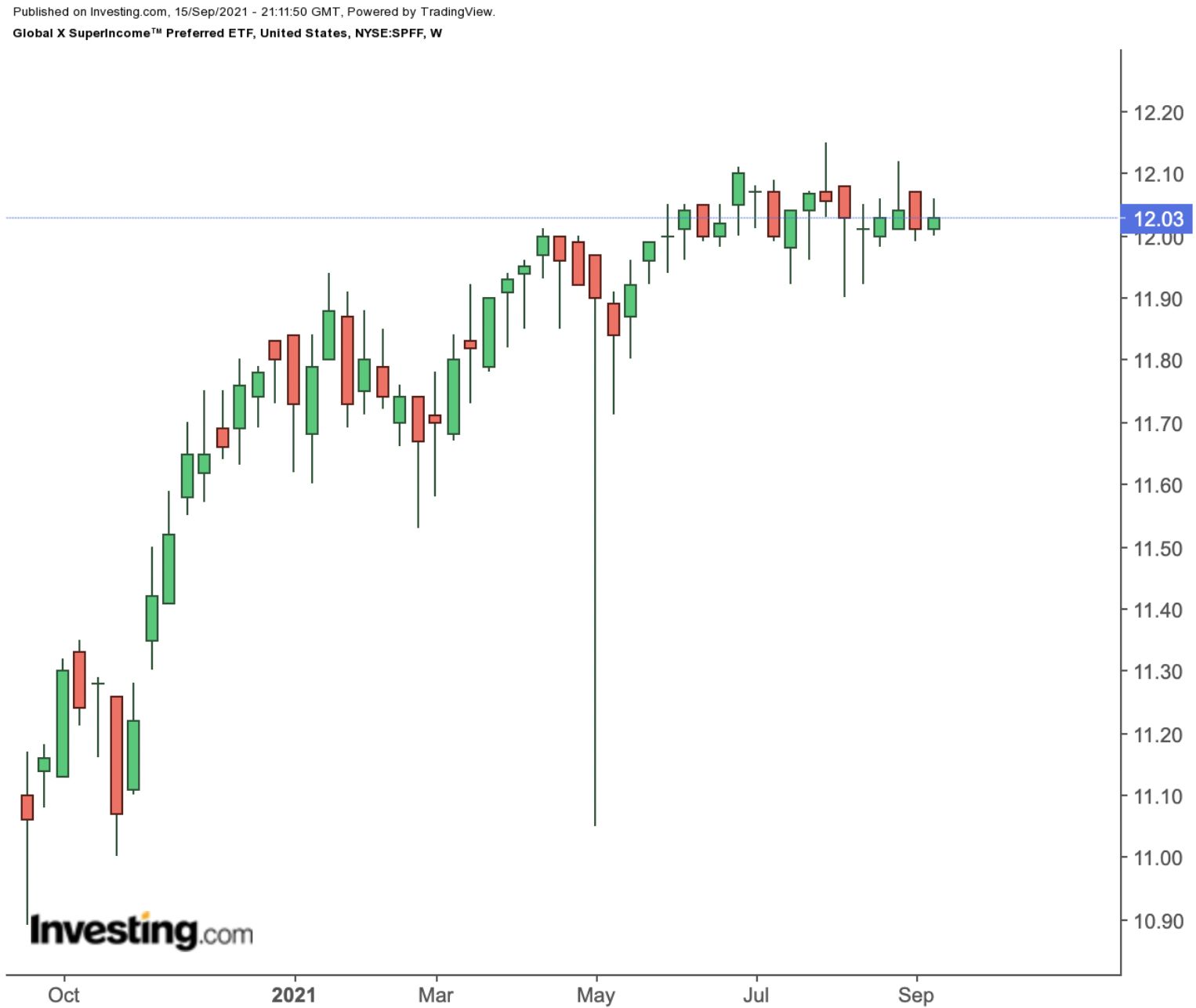September has meant increased volatility and doldrums in the broader markets. For instance, so far this month, the Dow Jones Industrial Average, the S&P 500 and the NASDAQ 100 are down around 2.4%, 1.9% and 1.6%, respectively. As a result, those looking for steady income are putting preferred shares on their watchlists.
Preferred stocks are hybrid assets. They have characteristics of both bonds, which pay a fixed income, and shares, which represent ownership in a businesses. However, we should note that this simplified explanation centres around US-based preferred securities. In other jurisdictions, they might have slightly different characteristics.
Investors typically buy preferred stocks for income and not necessarily growth. Holders get dividend payments on a set schedule, resembling bond payments. But these securities typically give a higher return than bonds. In the US, there could also be favorable tax treatment of the distributions. Therefore, interested readers might want to consult a financial advisor or a tax professional.
Recent research by Anthony L. Loviscek of Seton Hall University in New Jersey, suggests:
“A preferred stock fund allocation in the range of 5% - 15% can reduce portfolio risk, while at least preserving portfolio return, providing a cushion for portfolio managers of balanced funds and for income-seeking investors.”
Company earnings do not usually affect prices of preferred shares. However, credit ratings of issuers, as well as interest rates, are important factors to consider when investing in these securities. And, in the case of bankruptcy, preferred stockholders get priority over common stockholders. The term "preferred" highlights the higher claim on a firm's assets in case of liquidation.
We previously covered an exchange-traded funds (ETFs) that invest in preferred stocks. They were:
Invesco Preferred ETF (NYSE:PGX): Down 0.72% year-to-date; dividend yield is 4.88%. With net assets of over $7.5 billion, it is one of the largest preferred funds.
iShares International Preferred Stock ETF (NYSE:IPFF): This fund has closed in August 2021.
Today, we introduce another fund that could appeal to a range of investors.
Global X SuperIncome Preferred ETF
Current Price: $12.02
52-Week Range: $10.89 - $12.15
Dividend Yield: 5.65%
Expense Ratio: 0.58% per year
The Global X SuperIncome™ Preferred ETF (NYSE:SPFF) tracks the returns of the S&P Enhanced Yield North American Preferred Stock Index. The fund, which was listed in July 2012, currently invests in 41 of the highest yielding preferred stocks listed in the US and Canada.

In terms of the sub-sectoral breakdown, financials comprise the highest portion, with 62.83%, followed by energy (8.94%) and health care (5.84%).
Our readers might be interested to know that in the US, banks are among the largest issuers of preferred stocks. The leading 10 holdings in the fund account for 40% of net assets of $230 million.
Preferred securities of the semiconductor heavyweight Broadcom (NASDAQ:AVGO) (covered here), health-care equipment manufacturer Becton Dickinson (NYSE:BDX), Ally Financial (NYSE:ALLY), PNC Financial Services (NYSE:PNC) and US Bancorp (NYSE:USB) lead the names in the roster.
Year-to-date, the fund is up about 7.9% and saw a multi-year high in August. The current price supports a yield of 5.65%. We should note that SPFF makes distributions on a monthly basis. Interested readers could consider investing around these levels.
Several other preferred ETFs that could be of interest to readers include:
First Trust Preferred Securities and Income ETF (NYSE:FPE)
iShares Preferred and Income Securities ETF (NASDAQ:PFF)
SPDR® ICE Preferred Securities ETF (NYSE:PSK)
